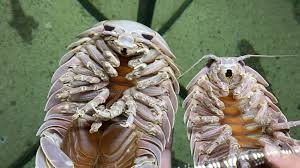
The entire world oceans conceal several intriguing creatures which can be still not acknowledged to individuals on land. One creature is definitely the giant isopod, which belongs to the identical family members because the popular woodlouse. Known as Bathynomusgiganteus in scientific terms, these creatures are living in the strong seas and get been a way to obtain secret and interest for humanity. In this post, we will investigate the intriguing realm of giant isopods- the way that they live, consume, and duplicate.
rubber ducky isopods are normally in the depths of the Atlantic, Pacific, and Indian native oceans, living at depths between 550 and 7,020 feet. They are known to become adults to 2.5 feet in length and consider approximately 3.5 pounds, making them one of many most significant members of the isopod family members. They have a distinctive physical appearance, having a difficult exoskeleton and notable, segmented eye. Giant isopods are also known for their slow activity, which makes them simple to capture in deeply-sea trawling.
Giant isopods are scavengers that feast upon dead animals that basin to the seas floor. They are witnessed preying about the carcasses of whales, squid, and fish, using their potent mandibles (mouth-like appendages) to get rid of the tough pores and skin and eat the flesh inside. During times of cravings for food, giant isopods could go without foods for several weeks, because of their ability to hold nutrients and vitamins in professional body organs generally known as oily body.
Even with their sluggish motions, giant isopods can be really resilient creatures that could endure within the strong water. They are able to tolerate the high water tension and low temperature ranges, that will make emergency a hardship on most other marine organisms. Moreover, these people have a slow fat burning capacity, which allows them to help save vitality inside the reduced-nutrient surroundings from the serious seas. Consequently giant isopods can are living for as much as five years without giving, leading them to be highly flexible animals.
Giant isopods have got a special strategy for reproducing, in which the feminine carries her eggs in the specific brood pouch, which is situated on the underside of her abdominal area. Following mating, the eggs develop in the pouch for a number of a few months, then the feminine lets out the hatched chicken eggs into the water. The younger isopods seem similar to men and women and undergo small metamorphosis, causing them to be well modified alive inside the strong ocean.
To put it briefly:
Giant isopods are interesting beings that show off the diversity and strength of lifestyle within the ocean. They have a special and professional lifestyle that has empowered these people to survive from the unpleasant problems of your serious sea. When we consistently discover and research the beach depths, we will definitely find far more secrets and techniques about these incredible animals as well as the planet they live in.